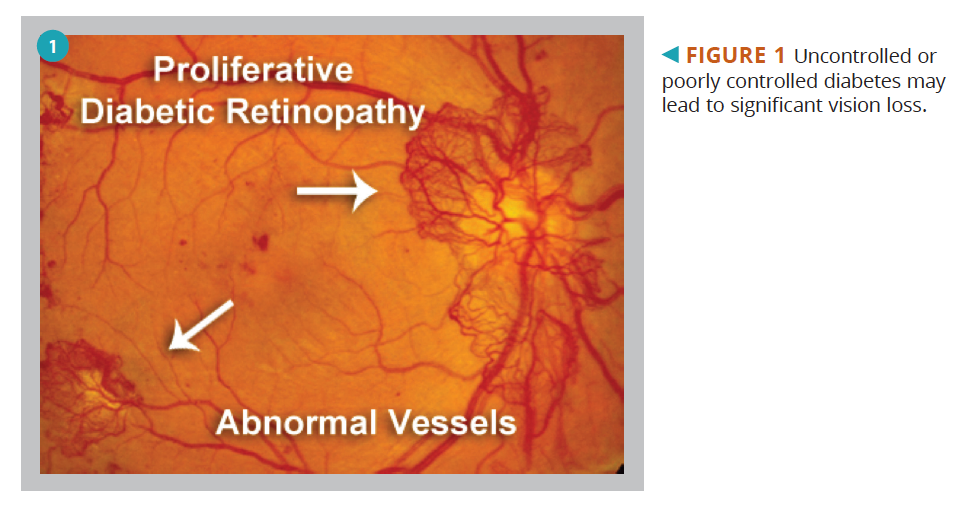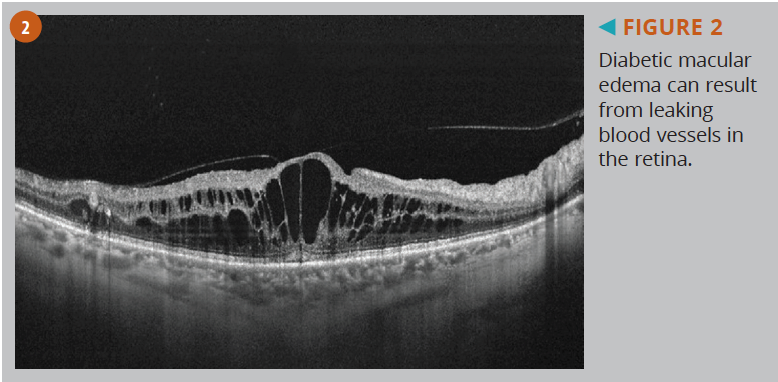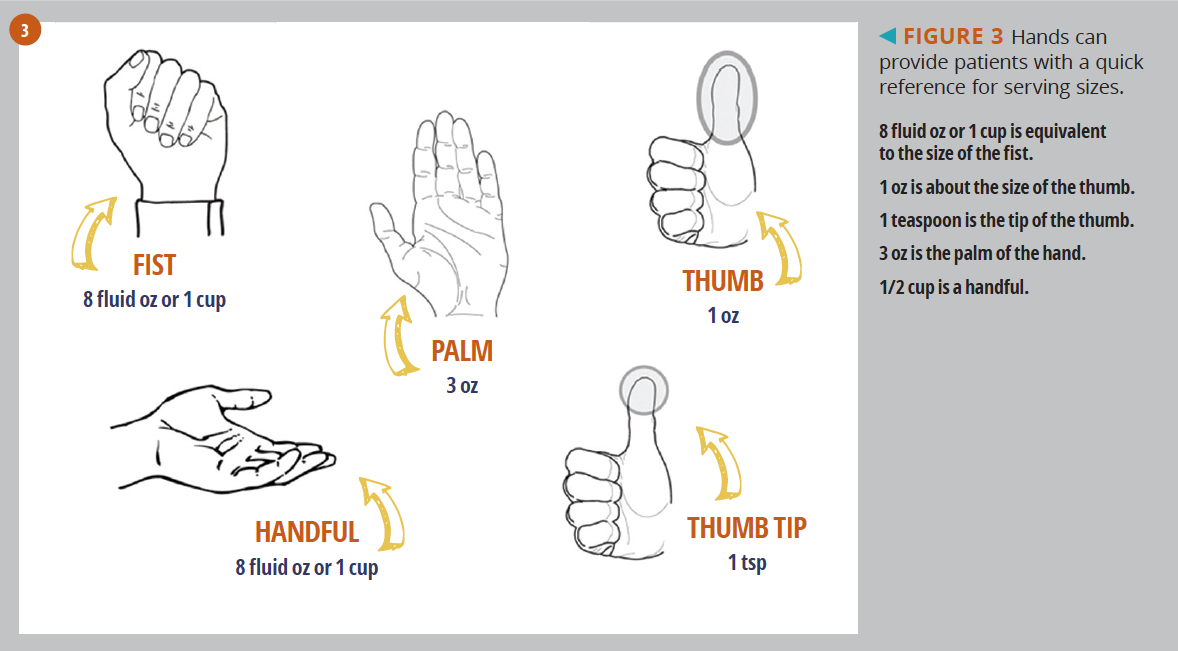Understand diabetes and nutrition

As the prevalence of diabetes in America continues to climb, practitioners are faced with questions every day in their practices. Questions such as, "Can I eat cake now? When will this diet be over?"
As simple as they seem, questions like these open the door for a conversation that can change the lives of our patients, neighbors, parents, and possibly our own children.
Taken directly from the American Diabetes Association 2017 National Diabetes Statistics Report, the prevalence of diabetes in 2015 was 30.3 million Americans, or 9.4 percent of the population. Of that 30.3 million, approximately 1.25 million American children and adults have type 1 diabetes.1
At that time there were 1.5 million new cases of diabetes diagnosed every year. If we followed that trend, we extrapolate the number in 2019 to be close to 34.8 million Americans affected today.
In 2015, diabetes was the seventh leading cause of death in the U.S. with 79,535 death certificates listing it as the underlying cause of death, and a total of 252,806 death certificates listing diabetes as an underlying or contributing cause of death.2
As of March 2018, the cost of diabetes to the healthcare system was $327 billion in 2017, and the average medical expenditures among people with diagnosed diabetes were 2.3 times higher than what expenditures would be in the absence of diabetes.
These numbers are staggering-especially in a disease that in many cases can be prevented or treated without pharmaceutical intervention.
Related: Proliferative retinpathy leads to risk of sight loss Closer to home
I practice in rural West Virginia where this disease is rampant. In the Centers for Disease Control’s 2016 report, West Virginia was ranked as the state with the highest prevalence of diabetes in the nation. With such a high number of patients affected by this disease, it is not one to be taken lightly.
Unfortunately, what I see in my home state is an epidemic of the misinformed or the uninterested. So many of my patients are unaware of their last hemoglobin A1c numbers, and more than half do not check their blood glucose levels daily.
I wonder if the fact that diabetes has become such a household word that for many it has become less serious.
When I ask patients if they were diagnosed with cancer today and their doctor recommended a change to their diet as part of their treatment plan, would they implement these changes?” there is a resounding yes. However, when this same question is asked about diabetes, so many simply ignore it.
This is why it is important for eyecare providers and their staffs to help inform the millions of diabetics we encounter in our practices. Knowledge is power. An understanding of this disease process, its effect on the eye itself, and how nutrition plays a key role in its treatment can truly impact our patients.
Related: When diabetes goes from bad to worse

Type I and Type II diabetes
Let’s begin by understanding the pathophysiology of both Type I and Type II diabetes. Glucose is one of the body’s primary energy sources, and a normal range of plasma glucose concentration is approximately 70 to 100 mg/dL. Hyperglycemia is defined as a high blood glucose concentration and thus classified as diabetes.
In both Type I and Type II diabetes, this is the primary destructive concern. An elevated blood glucose level causes damage to the small blood vessels in the body, leading to the malfunction or death of the organ affected.
When exposed to high glucose levels, vessels begin to leak like a hose with a many small holes. Not only are needed oxygen and other nutrients not going where they are supposed to go, but leaked blood causes the destruction of the cells it touches. The difference in Type 1 v.s Type 2 diabetes relates to the reason for that high blood glucose level.
Type I diabetes is primarily an autoimmune disorder that selectively destroys pancreatic beta cells so that these cells cannit secrete insulin.
Type II diabetes is characterized by insulin resistance in skeletal muscle, liver, and adipocytes and defects in insulin secretion by pancreatic beta cells. These increase the overall level of glucose in the bloodstream, which leads to leaked blood and destroyed cells.
Keeping the body’s blood glucose level stable is known as glucose homeostasis. This is critically important to the health of the body’s cells and organs.
Related: Ocular manifestations of diabetes: Some clues for eyecare professionals Food and insulin
When people consume nutrients in the form of food, the stomach begins to break down this food into glucose. This causes a sudden spike in blood glucose levels, depending on the types of food consumed.
Complex food structures like proteins break down more slowly than sugars or simple carbohydrates, thus slowing the release of glucose into the bloodstream. When glucose levels rise, beta cells in the pancreas release insulin.
Insulin causes most of the glucose absorbed after a meal to be stored almost immediately as glycogen in the liver. It also suppresses the new formation of glucose by the kidneys and stimulates the uptake of glucose into cellular tissues such as skeletal muscles and adipose cells. This process lowers the overall blood glucose levels back into a normal range.
Type I diabetes is a progressive loss of pancreatic beta cells, thus the body does not have the correct level of insulin required to create glucose homeostasis.
In Type II diabetes there is still a loss of pancreatic beta cells; however, the primary cause of elevated glucose is insulin resistance at the level of cellular uptake.
This means that patients have a normal insulin range with elevated glucose levels because less of that glucose is being absorbed by the cells that are supposed to receive it.
Related: Role of insulin therapy in diabetes and diabetic retinopathy Diabetic retinopathy
Diabetes has both microvascular and macrovascular consequences.
Diabetic retinopathy in the eye, nephropathy in the kidney, and peripheral foot and hand neuropathy are microvascular in nature. Accelerated central atherosclerosis causing stroke and heart attack and accelerated peripheral vascular disease (poor circulation) are macrovascular consequences of diabetes.
Diabetic retinopathy is the leading cause of vision impairment and blindness among working-aged Americans.
The retinal vasculature is specialized to provide oxygen and glucose to meet the high metabolic demands of the retina. The cells in this part of the body contain glucose transporters that promote the ready uptake of glucose but do not downregulate this transport when high blood glucose levels arise. This results in an increase in glucose uptake into the retinal vasculature when blood glucose levels are high and thus a higher level of damage to the retinal vessels.
Related: How to potentially reduce diabetic retinopathy by manipulating microbial species
Diabetic retinopathy is the result of damage to the retinal microvasculature system.
Retinal neurons are also sensitive to this hyperglycemia-induced damage causing the presence of macular edema and retinal neurodegeneration.
Types of diabetic retinopathy depend on the severity of the disease. Generally, retinopathy is considered to be non-proliferative (no new blood vessel growth) or proliferative (new blood vessel growth).
New blood vessels are formed in the body when signals from dying cells are sent out. These new vessels are fragile and prone to leakage, which in turn causes more retinal damage.
Treatment options for patients often depend on the level of severity within these categories. Surgical intervention includes intraocular pharmaceutical injections to stop signals for new growth or laser photocoagulation to destroy abnormal blood vessels or other retinal cells, thus reducing the overall retinal oxygen demand.
Related: Research initiatives offer treatment options for diabetic patients Watch the carbs

As the old saying goes, “An ounce of prevention is worth a pound of cure,” and so many patients wish they could turn back the clock and erase the poor dietary decisions that put them in need of such advanced treatments.
One method to offer patients is learning how to count carbohydrates in their diets. Carbohydrate counting is a flexible, relatively easy-to-understand meal plan for patients with diabetes.3-7
Carbohydrates are the main nutrients that affect postprandial glycemic response. They begin to raise blood glucose within approximately 5 minutes after eating, and they are converted to nearly 100 percent blood glucose within about 2 hours.
Related: How diet and nutrition affect disease
Carbohydrate counting focuses on the total amount of carbohydrates consumed rather than the source of carbohydrates. For that reason, this meal plan is more flexible, and no foods are completely forbidden.
When counseling patients on diabetes management, it is important to first educate yourself on which foods contain carbohydrates.
Common foods containing carbohydrates include:
– Breads
– Cereals
– Pasta
– Grains
– Rice
– Beans
– Starchy vegetables (potatoes, corn, peas)
– Fruit and fruit juices
– Milk
– Yogurt
– Regular soda
– Beer
– Fruit drinks
– Jams and jellies
– Cakes
– Cookies
– Candy
– Other sugar-containing foods
The term “carbohydrate serving” means one carbohydrate serving is equal to 15 g of carbohydrate. A general guideline for most patients is three to four carbohydrate servings per meal (or 45 to 60 g of carbohydrate).
Related: Good carb, bad carb
Patients will often be prescribed a specific amount of carbohydrate servings per meal by a registered dietitian (RD) or certified diabetes educator (CDE). Working with a RD or CDE will help individualize the diet plan to each person’s lifestyle or likes and dislikes and hopefully lead to better compliance.
Listed below are food groups with examples of common carbohydrate servings:
Starches:
– 1 slice bread
– 3/4 c unsweetened cereal
– One half English muffin
– 1/3 c cooked pasta, spaghetti or rice
– 1/2 c mashed potatoes, corn or peas
Fruits:
– 1 small fresh fruit (4 oz)
– 1/2 c canned fruit (in natural juice)
– 17 grapes
– 1/2 c fruit juice (4 oz)
Dairy:
– 8 fl oz skim, 1%, 2%, or whole milk
– 1 c plain yogurt
– 1 cup plain or vanilla soy milk
Items that contain little to no carbohydrates are considered “free foods.” Patients are allowed as much of these that they desire. These include:
– Cucumbers
– Green leafy vegetables
– Carrots
– Tomatoes
– Broccoli
– Celery
– Other non starchy vegetables
– Coffee
– Tea
– Other unsweetened beverages
Other foods that contain no carbohydrates are proteins and fats. Examples of protein include:
– Meat
– Fish
– Poultry
– Cheese
– Eggs
– Peanut butter
– Cottage cheese
– Tofu
Examples of fats are:
– Butter
– Oils
– Margarine
– Mayonnaise
– Cream cheese
– Nuts
– Seeds
– Avocados
– Sugar-free salad dressings
Tools can help simplify carbohydrate counting. For example, looking at food labels, using measuring cups, or eyeballing foods with your hand as a size guide can provide guidance (see Figure 3).

Pay attention to the Serving Size and Total Carbohydrate sections on food labels. Total carbohydrate includes the grams of sugar, sugar alcohol, starch, and dietary fiber per serving size.
For example, how many carbohydrates are in this meal?
– 1 1/2 c of Cheerios
– 1 small banana
– 8 fluid oz of 1% milk
– 1 egg
The correct answer is 60 g or 4 servings of carbohydrates. The Cheerios contain 30 g, banana is 15 g, milk is 15 g, and an egg contains 0 carbohydrates.
Related: Why ODs should care about sugar Wrapping up
So let’s pull this together. Carbohydrate counting is a meal-planning approach to help those with diabetes maintain blood glucose control. If you have a patient who is struggling to understand the importance of diabetes and diet encourage them to consult a RD or CDE to help them master their carbohydrate-counting skills.
Remember that for many patients a diagnosis of diabetes is frightening and overwhelming. Understanding the information and implementing a plan is hard, and many people give up before they start. Support is a big part of success. Suggest that at least one family member act as a patient’s “cheerleader.” Fostering a team mentality can make all the difference. To help patients be successful diabetics, their eyecare providers need to be a part of the team.
Understanding the pathophysiology of diabetes, its damaging effects to the body, and dietary counseling techniques can be the first step in helping improve the quality of our patients’ lives.
Read more about diabetes and nutrition here

References:
1. American Diabetes Association. Standards of medical care in diabetes-2007. Diabetes Care. 2007 Jan;30(suppl 1):S4-S41.
2. The Pharmacist & Patient Centered Diabetes Care; National Certificate Training Program. American Diabetes Association. Standards of Medical Care in Diabetes. Diabetes Care. 2007;30:S4-S41.
3. American Diabetes Association. Healthy Food Choices Made Easy. Available at: https://www.diabetes.org/nutrition/healthy-food-choices-made-easy. Accessed 9/11/19.
4. American Dietetic Association, American Diabetes Association. Exchange Lists for Meal Planning. Chicago, IL, Alexandria, VA: American Dietetic Association, American Diabetes Association; 2003.
5. Thomas E. Survey reveals shortfall in pediatric nurses' knowledge of diabetes. J Diabetes Nurse. 2004;8:217-221.
6. Warshaw H, Bolderman K. Practical Carbohydrate Counting: A How to Teach Guide for Health Professionals. Alexandria, VA: American Diabetes Association; 2001.
7. Warshaw H, Kulkarni K. American Diabetes Association Complete Guide to Carbohydrate Counting. Alexandria, VA: American Diabetes Association; 2004.